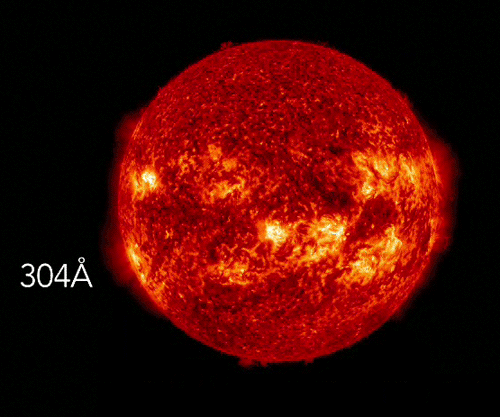Interplanetary Scintillation
In astronomy, interplanetary scintillation refers to random fluctuations in the intensity of radio waves of celestial origin, on the timescale of a few seconds. It is analogous to the twinkling one sees looking at stars in the sky at night, but in the radio part of the electromagnetic spectrum rather than the visible one. Interplanetary scintillation is the result of radio waves traveling through fluctuations in the density of the electron and protons that make up the solar wind. The IPS technique exploits the scattering of radiation from compact components of quasars and radio galaxies by the solar wind density irregularities, which are moving radially outward from the sun.
The importance of the Ooty IPS measurements increased when the day-to-day monitoring of the helio-sphere was made on a grid of large number of radio sources (∼800–1,000 per day), whose lines of sight cut across different parts of the heliosphere. The Ooty IPS studies have provided for the first time a complete coverage of the imaging of CME structures all the way from the sun to the earth. The solar wind measurements at Ooty over the solar cycle 23 provided the large-scale changes of latitudinal features of the solar wind density turbulence and speed. Routinely imaging of solar wind disturbances at Ooty in the sun-earth distance has provided a capability to predict the adverse space-weather events before their arrival at the near-earth environment.

Scheme of the Interplanetary Scintillation Phenomenon and Graph.
The new technique developed at Ooty to study the interplanetary scintillation observations provides valuable information about the solar wind and solar-wind magnetic storms that affect the near-Earth environment. Major eruptive events on the Sun, such as flares or coronal mass ejections (CMEs), can have a profound influence on the terrestrial environment. CMEs can interact with Earth's magnetosphere to generate major geomagnetic storms and substorms, sometimes affecting communication and power grid systems and accelerating energetic particles that have been known to damage communications satellites and may harm astronauts working in space. Ooty scintillation measurements are useful in identifying and understanding the evolution of disturbances caused by powerful CME events in the Sun-Earth distance and forecasting the arrival of such large events at the near-Earth space.

The objective of the Ooty scintillation study is to significantly advance the understanding of the three-dimensional (3-D) structure and evolution of CMEs and their interaction with the interplanetary medium and terrestrial magnetosphere using combined imaging, radio, and in-situ measurements from spacecraft. Ooty measurements have been successfully employed to track CMEs from Sun to Earth distance and they have elucidated the evolution of the 3-D structure and speed of CMEs in the inner heliosphere. Interplanetary scintillation observations also provide a valuable database to understand the Space Weather changes and its predictability.

Artistic Impression of a Coronal Mass Ejection(CME).
